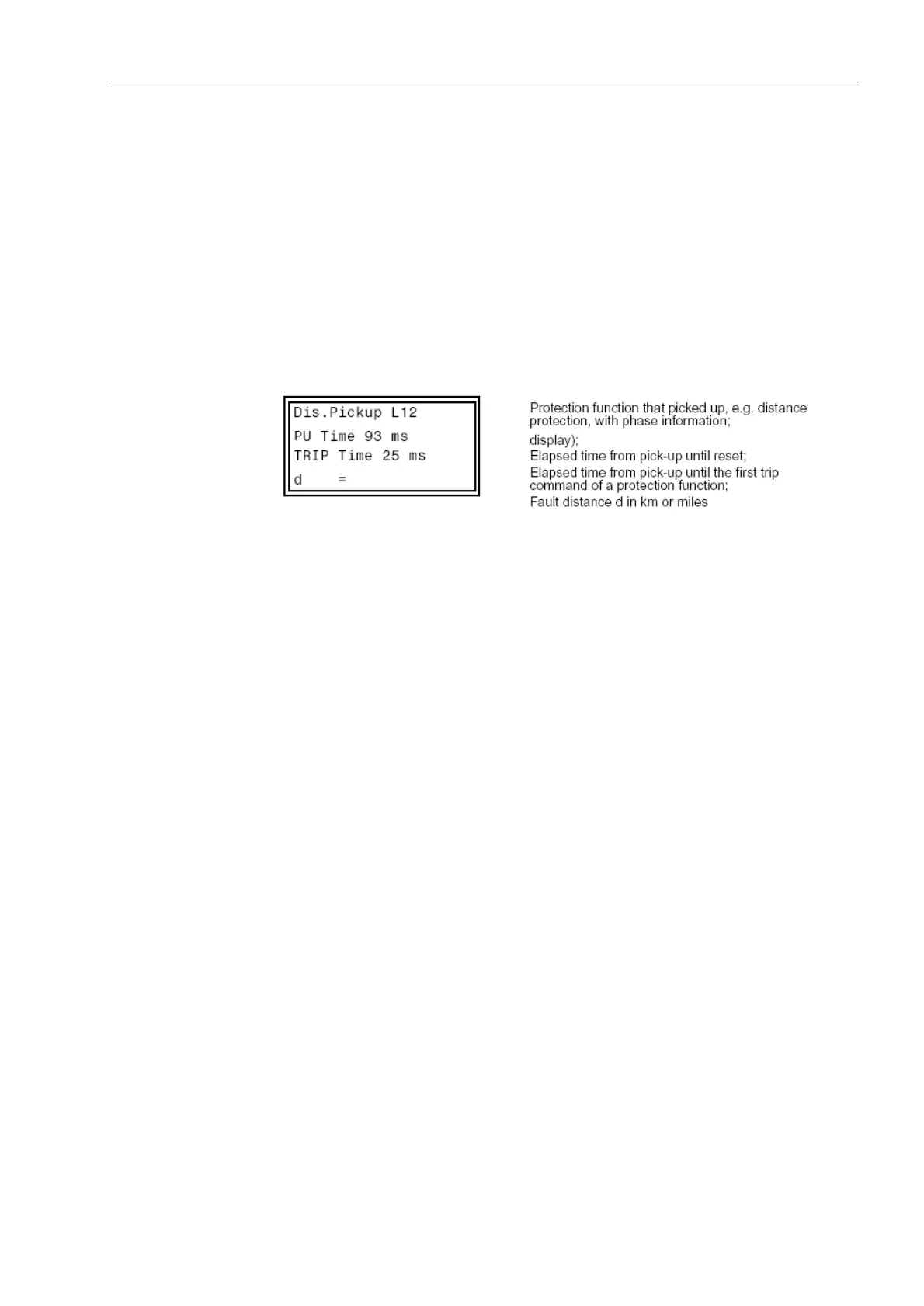2.21 Auxiliary functions
349
7SA522 Manual
C53000-G1176-C155-3
so that the duration of the fault until tripping and up to reset of the trip command can
be ascertained. The resolution of the time information is 1ms.
A system fault starts with the recognition of the fault by the fault detection, i.e. first
pickup of any protection function, and ends with the reset of the fault detection, i.e.
dropout of the last protection function. Where fault causes several protective functions
to pick up, the fault is considered to include all that occurred between pickup of the
first protective function and dropout of the last protective function.
Spontaneous
Annunciations
After a fault, the device displays automatically and without any operator action on its
LCD display the most important fault data from the general device pickup in the se-
quence shown in Figure 2-161.
Figure 2-161 Display of spontaneous messages in the display — Example
Retrieved Annunci-
ations
The messages for the last eight network faults can be retrieved. In total 600 indications
can be recorded. Oldest data are erased for newest data when the buffer is full.
Spontaneous
Annunciations
Spontaneous annunciations contain information on new incoming annunciations.
Each new incoming message appears immediately, i.e. the user does not have to wait
for an update or initiate one. This can be a useful help during operation, testing and
commissioning.
Spontaneous annunciations can be read out via DIGSI
®
. For more details, refer to the
SIPROTEC
®
4 System Description, Order No. E50417-H1176-C151.
General Interroga-
tion
The general interrogation which can be retrieved via DIGSI
®
enables the current
status of the SIPROTEC
®
device to be read out. It shows all annunciations that are
subject to general interrogation with their current value.
2.21.2 Statistics
Counting includes the number of trips initiated by 7SA522, the accumulated breaking
currents resulting from trips initiated by protection functions, the number of close com-
mands initiated by the auto-reclosure function.

